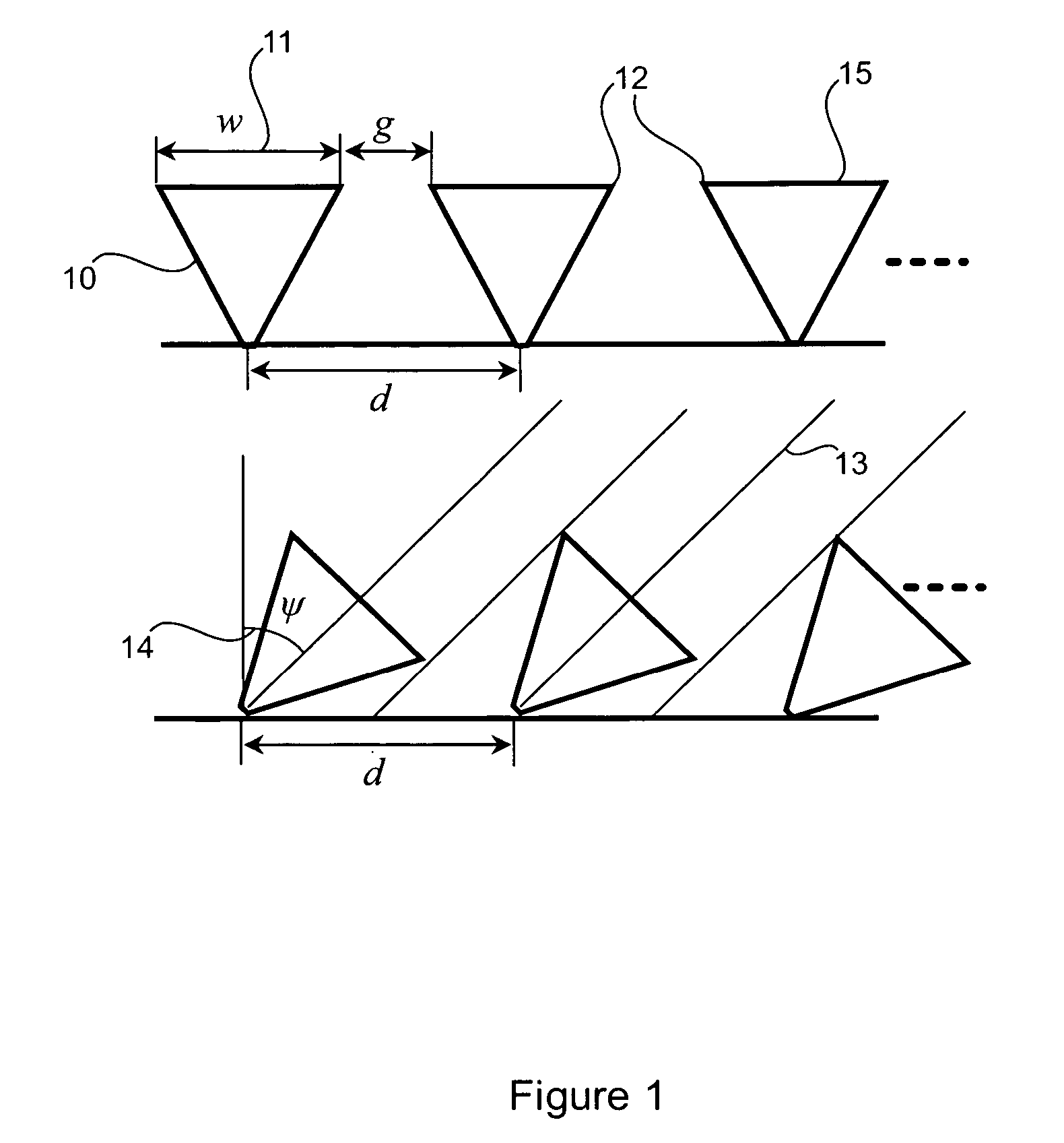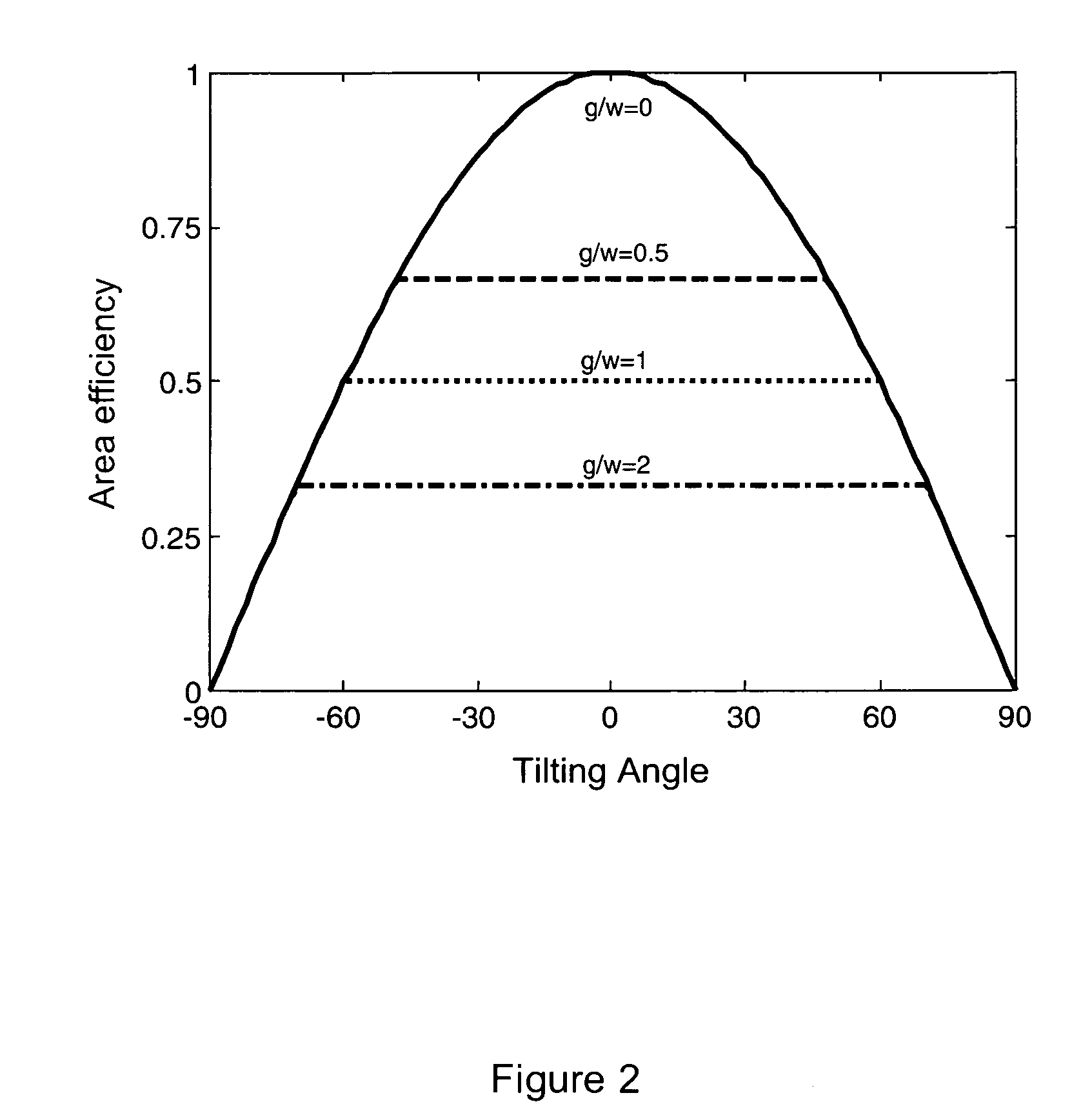Solar modules with tracking and concentrating features
a solar module and solar concentrator technology, applied in the field of solar modules, can solve the problems of difficult installation of sun tracking panels on residential rooftops, incompatibility of solar concentrator systems of the day, and thin solar cell modules of flat panel applications, so as to reduce the number of solar cells needed and enhance photovoltaic efficiency
- Summary
- Abstract
- Description
- Claims
- Application Information
AI Technical Summary
Benefits of technology
Problems solved by technology
Method used
Image
Examples
Embodiment Construction
[0055]The present inventions provide combinations of features useful in increasing the efficiency and lowering the cost of power production from sunlight. Systems of the invention provide mechanical and optical components that can optimize capture of sunlight for all seasons and times of day in a relatively thin and stationary module. Systems of the invention can include arrays of photovoltaic cells disposed to each receive appropriate frequencies of the incoming spectrum through devices of the invention. Efficiencies can be further improved by providing thermoelectric devices in the systems to generate voltages from waste heat, cooling components to enhance the efficiency of the voltaic components, and vapor entrapment systems to prevent fogging of optic components.
[0056]Solar-electric systems of the invention provide devices to efficiently convert solar rays and / or heat to electrical power. Tracking systems are provided to follow the sun with concentrators with one or two degrees ...
PUM
 Login to View More
Login to View More Abstract
Description
Claims
Application Information
 Login to View More
Login to View More - R&D
- Intellectual Property
- Life Sciences
- Materials
- Tech Scout
- Unparalleled Data Quality
- Higher Quality Content
- 60% Fewer Hallucinations
Browse by: Latest US Patents, China's latest patents, Technical Efficacy Thesaurus, Application Domain, Technology Topic, Popular Technical Reports.
© 2025 PatSnap. All rights reserved.Legal|Privacy policy|Modern Slavery Act Transparency Statement|Sitemap|About US| Contact US: help@patsnap.com



